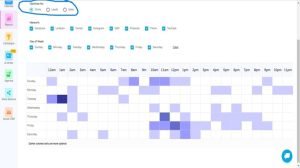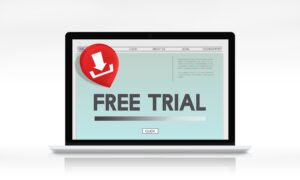 Small Business Social Media Marketing – Is It Important?
Small Business Social Media Marketing – Is It Important?
If you’re a small business owner wondering whether social media is worth the effort—here’s the truth: it’s no longer optional. With over 4 billion people using social media daily, these platforms offer a direct, cost-effective way to build brand awareness, connect with customers, and drive business growth.
To get started effectively, focus on 2–3 platforms where your ideal customers are already active. For example, Instagram works well for local services and visual content, while LinkedIn is ideal for B2B businesses. From there, make sure your profiles are fully optimized with high-quality visuals, consistent branding, and up-to-date business information.
The key to success isn’t just being present—it’s being strategic. That means creating content that resonates with your audience, using scheduling and automation tools to stay consistent, and reviewing your analytics to understand what works. Engaging formats like polls, Q&As, and customer testimonials help build trust and encourage interaction—both of which signal credibility to your followers and search engines.
Whether you’re new to social media or looking to improve your current approach, this guide will walk you through practical tips to help you get better results with less effort.
Key Takeaways: How to Succeed with Small Business Social Media Marketing
Know Your Audience: Identify where your ideal customers spend time online and focus on 2–3 social platforms that match. Instagram, Facebook, and LinkedIn are strong options for most small businesses. Others can look at TikTok and YouTube. It depends on the type of business you have.
Optimize Your Profiles: Use high-quality visuals, consistent branding, and complete business details on every social platform. A polished profile builds credibility and trust.
Plan Strategic Content: Develop a content calendar using tools that help schedule and automate posts. Use AI tools to create timely, relevant, and engaging posts tailored to your audience.
Engage Consistently: Encourage interaction through polls, stories, and real-time replies. Ask questions, share customer stories, and feature user-generated content to build community and brand loyalty.
Track What Matters: Use built-in analytics tools to monitor engagement, reach, click-through rates, and conversions. These insights help you refine your strategy and improve ROI over time.
Why Social Media Matters for Small Businesses
Small business social media sweeps through the business landscape as an essential tool for small businesses aiming to expand their reach and connect with over 4 billion daily users. You can’t overlook its power to shape your brand identity and foster invaluable engagement. By honing a robust content strategy, you’re not just throwing words into the wind; you’re strategically communicating with your target audience, showing them what you stand for and why they should care.
Moreover, social media isn’t just about posting—it’s about building a community around your brand. This isn’t an overnight success story; it’s a committed process of engaging actively with your followers, addressing their needs, and making them feel part of your business journey. Think of it as Small Business Social Media marketing.
This community building is crucial; it provides social proof to prospective customers who use social platforms to research products before making purchases. Seeing an active, responsive brand can sway their decisions in your favor.
 Choosing the Right Platforms for Your Small Business Social Media Management
Choosing the Right Platforms for Your Small Business Social Media Management
Understanding which social media platforms will best amplify your brand starts with knowing where your audience spends their time. For instance, if you’re targeting younger consumers, Instagram’s vast user base of over 2 billion, mainly under 34, might be perfect for you. On the other hand, LinkedIn’s professional environment is ideal for B2B engagement, especially since a significant portion of its users are professionals aged 25 to 34.
Here’s a quick look at key platform demographics and engagement potential:
| Platform | Key Demographic & Engagement Insight |
|---|---|
| 90% follow a business, mostly under 34 | |
| 59.1% aged 25-34, professional focus |
Conducting a competitor analysis can also steer you towards the right platforms. See where your competitors thrive and consider how you can differentiate your presence. Perhaps they’re missing out on engaging with a niche audience that you can captivate.
Choose 2-3 platforms where your target audience is most active, and where you can create tailored content types. This focus will allow you to deploy engagement strategies more effectively without stretching your resources too thin. Remember, it’s not just about being present; it’s about being impactful.
 Setting Up Your Profiles for Your Small Business Social Media Management Pages
Setting Up Your Profiles for Your Small Business Social Media Management Pages
Setting up your small business social media profiles correctly is essential for making a strong first impression. Start by choosing 2-3 platforms that best align with your target audience’s demographics and your business type. This focus will help you manage resources more effectively and engage with your audience efficiently.
When you’re filling out your profiles, make sure every section is complete with clear, concise information about your business. Include contact details and a compelling description of what you offer.
Visual branding is key, so use high-quality, branded visuals for your profile and cover images. This consistency in visual content not only makes your profile more attractive but also enhances recognition across platforms.
Profile optimization isn’t just about looks; it’s also about being discoverable. Utilize a keyword strategy in sections like the “About” or “Bio” to improve your searchability. Choose keywords that accurately describe your business and appeal to your intended audience.
Lastly, don’t set and forget. Keep your profiles up-to-date with fresh content and the latest information about your business. Regular updates keep your audience engaged and informed, ensuring content consistency and maintaining interest in your offerings.
Through Fresh Eyes Small Business Social Media Management Platform Makes Managing This Easy! – Check Out Our Plans – Click Here
It’s Easy to Create Engaging Social Media Content with AI
Harnessing AI to craft engaging social media content can revolutionize the way small businesses connect with their audience. By leveraging AI Creativity, you’re not just keeping up; you’re staying ahead. AI tools analyze audience preferences and trends, enabling you to create tailored content that resonates deeply. This isn’t just about blasting out promotions; it’s about meaningful, personalized interactions.
Imagine AI’s role in visual generation and copy production—this technology drastically cuts down the time you spend creating content. You can maintain a consistent posting schedule without sacrificing quality, ensuring your social media feeds are always fresh and engaging.
And there’s more than just saving time; AI helps pinpoint what works. Through trend analysis and engagement metrics, AI identifies high-performing content types, letting you refine your engagement strategies effectively. AI’s capability to tap into trending topics means your content stays relevant and timely, which boosts your engagement rates. You’re not just posting; you’re posting what your audience wants to see now.
Scheduling and Automation Tools
With social media scheduling tools, you can streamline your content management, guaranteeing that your posts are always timely and engaging. These tools let you plan and automate your updates, which means you’re always on top of your game, without the constant manual effort. Imagine setting up a whole week’s content in one go—that’s the efficiency we’re talking about!
By using a content calendar, you can map out your posts according to when your audience is most active. This kind of audience targeting guarantees that your messages hit home at just the right time. About 63% of marketers are already using these tools to align with peak engagement times, optimizing each post for maximum impact.
Moreover, the automation features don’t just stop at scheduling. They allow for platform integration, enabling you to manage multiple small business social media accounts from a single dashboard. This cross-platform posting amplifies your reach while keeping the workload manageable. And don’t forget, these tools aren’t just about posting. They provide valuable analytics that help you tweak your strategy based on real performance data.
Tracking how each post performs can lead to a 20-40% traffic boost by adjusting your tactics according to what resonates most with your followers.
Through Fresh Eyes Small Business Social Media Management Platform Makes Managing This Easy! – Check Out Our Plans – Click Here
Engaging With Your Audience
After mastering the scheduling and automation of your small business social media content, your next step is to actively engage with your audience. This interaction not only boosts your visibility but also considerably enhances brand loyalty.
Here’s how you can make the most of it:
- Utilize interactive content like polls or questions to spark conversations. This not only increases engagement rates but also lets you gather valuable audience feedback directly.
- Make a habit of responding promptly to comments and messages. This shows you value your customers and leads to higher customer satisfaction.
- Encourage your followers to share their own experiences with your brand through user-generated content. This builds trust and can influence the purchasing decisions of potential customers.
 Measuring Small Business Social Media Marketing Success – Tracking and Analyzing Metrics
Measuring Small Business Social Media Marketing Success – Tracking and Analyzing Metrics
Measuring your small business social media marketing success is essential to understanding how well your content connects with your audience. By tracking key metrics such as engagement rate, reach, impressions, and conversion rates, you’ll gain valuable audience insights and see how effective your content is.
Remember, 70% of marketers look at website traffic to measure their social media ROI, underlining the need to link your small business social media management efforts with your overall marketing performance.
Engagement strategies are vital, and it’s proven that videos can boost engagement rates by up to 1200%. You should definitely track which types of content resonate most with your audience. Are videos doing better, or are infographics leading the way? Knowing this will help you tailor your content for maximum impact.
Furthermore, conducting A/B testing on different posts allows you to hone in on what formats or messages yield the best results. This metric analysis is key to optimizing your content performance. Regular reviews of your social media analytics help refine your strategies based on real feedback and sentiment analysis, ensuring your content stays relevant and engaging.
Through Fresh Eyes Small Business Social Media Management Platform Makes Managing This Easy! – Check Out Our Plans – Click Here
The Benefits of Using a Small Business Social Media Management Platform
Leveraging a small business social media management platform offers you access to over 4 billion daily active users, dramatically enhancing your brand’s visibility and potential customer base. This powerful tool isn’t just about posting updates; it’s about building connections and driving real business results through innovative strategies.
- Customer Engagement Strategies: By responding to comments and messages, you’re not just fostering relationships; you’re boosting loyalty and encouraging repeat business. Approximately 54% of consumers use social media to research products, making your interactive presence essential.
- Brand Visibility Tactics: Utilize content creation tips to craft posts that resonate with your audience. Eye-catching images, compelling videos, and engaging stories about your products or services can increase your reach and visibility. Remember, an active social media presence can spike your web traffic by 20-40%.
- Audience Targeting Methods: Small business social media management platforms offer tools that allow you to target specific demographics. This means you can tailor your content and advertisements to the people most likely to be interested in your offerings, aligning with the latest social media trends.
Harnessing these elements not only positions your brand more prominently but also converts passive viewers into active customers, maximizing your investment in your small business social media management.
Pricing and Packages
Understanding the costs associated with your small business social media marketing is crucial for budgeting effectively, especially for small businesses. You’ll find that pricing for these services varies greatly, typically ranging from $400 to $10,000 per month, when hiring a social media manager.
It’s critical to engage in competitor analysis to guarantee you’re getting the best value for your investment. Look for pricing transparency when selecting a service provider. This way, you won’t encounter unexpected costs, allowing you to plan your finances better. Small businesses often benefit from tiered packages. Basic plans, suitable for smaller budgets, start around $300 to $500 per month and typically include essential services like content creation and scheduling.
For more extensive engagement, including advanced analytics and strategy development, packages can cost between $1,000 and $3,000 monthly. These options demonstrate service scalability, confirming that as your business grows, your social media strategy can expand accordingly.
Now with our Small Business Social Media Management Platform, you can do a lot of this yourself. And our Business Booster Pro Plan will also post engaging content and holiday posts for you – it’s a bargain!
Through Fresh Eyes Social Media Management Platform Makes Managing This Easy! – Check Out Our Plans – Click Here
Getting Started
To kickstart your social media journey, first establish clear, measurable goals that reflect what you hope to achieve, such as boosting brand awareness or driving more traffic to your website. Next, identify your target audience. Immerse yourself in your existing customer data and research which social platforms they frequent. This will guarantee your content resonates and engages effectively.
For your social media strategy to be manageable and impactful, focus initially on 2-3 platforms that best align with your business type and audience demographics. Each have their own pros and cons.
Here’s how you can outline your approach:
- Content Planning: Create a plan that details posting frequency, key themes, and types of content. This guarantees branding consistency and keeps your messaging relevant and engaging.
- Engagement Techniques: Develop strategies for interacting with your followers. Whether through timely responses to comments or by running interactive polls and contests, engagement is key.
- Branding Consistency: Use consistent visuals and tone across all your chosen platforms to strengthen your brand identity and aid in recognition.
Social Media Platform Strengths and Weaknesses
1. Facebook:
- Strengths: Facebook offers extensive reach with over 2.9 billion users globally. It provides robust targeting options through Facebook Ads, comprehensive analytics, and features like groups, events, and marketplaces that encourage community engagement.
- Weaknesses: The platform faces challenges with younger demographics, who often prefer newer social media channels. Privacy concerns and algorithm changes also frequently affect how businesses reach their audiences organically.
2. Instagram:
- Strengths: Highly visual and popular among younger demographics, Instagram excels in brand storytelling through images, videos, Stories, and Reels. It also supports shopping directly through the app, making it a powerful tool for e-commerce brands.
- Weaknesses: Limited link functionality in posts can hinder direct traffic to external websites. High competition for attention can also make it difficult for smaller brands to get noticed without paid promotion.
3. TikTok:
- Strengths: TikTok’s algorithm favors content virality more than follower count, making it easier for new creators to gain visibility. The platform’s format is ideal for engaging and entertaining short-form content.
- Weaknesses: TikTok’s demographic skews very young, which may not suit all business types. The platform also faces scrutiny over data privacy and security concerns.
4. LinkedIn:
- Strengths: As a professional networking site, LinkedIn is ideal for B2B marketing, recruitment, and business development. It offers a targeted approach to reaching professionals and industry leaders.
- Weaknesses: Generally, it has lower engagement rates for non-business content and can be more expensive for advertising compared to other social platforms.
5. Threads:
- Strengths: As a newer platform, Threads offers the potential for first-mover advantage and less competition. It’s designed to be intertwined with Instagram, potentially leveraging Instagram’s massive user base.
- Weaknesses: Being new, its long-term viability and audience demographics are still unclear. The platform needs to establish a distinct identity separate from Instagram to sustain growth.
6. Twitter/X:
- Strengths: Twitter/X is known for real-time information and communication. It’s particularly strong in areas like news, entertainment, politics, and sports. The platform allows direct interaction with audiences and quick dissemination of information.
- Weaknesses: It can be challenging to manage reputation due to the fast-paced nature of the platform and the ease with which misinformation can spread. Recent ownership and name changes have also brought uncertainty regarding its direction and policies.
7. Pinterest:
- Strengths: Pinterest acts as a visual search engine, which is great for driving long-term traffic to blogs and product pages. It is especially effective for industries like home decor, fashion, and recipes, where visual appeal is key.
- Weaknesses: Pinterest users are predominantly female, which might limit reach depending on the product or service. The platform also requires consistent pinning of high-quality images to remain effective, which can be resource-intensive.
Understanding the unique features, strengths, and potential drawbacks of each platform can help marketers and businesses tailor their strategies to better engage their target audiences and achieve their digital marketing goals.
 Frequently Asked Questions
Frequently Asked Questions
What Social Media Should a Small Business Have?
You should explore Instagram for visual storytelling, utilize Facebook for targeted advertising, and focus on content planning to boost audience engagement. Enhance brand storytelling across platforms to connect deeply and effectively with your community.
How Much Should a Small Business Pay for Social Media?
You should evaluate social media budgeting carefully; consider platform pricing, advertising expenses, and cost comparison. Influencer collaborations can also vary in cost, so choose strategies that align with your financial capabilities and goals. If you choose to manage it yourself, make sure you are getting a user friendly and easy to manage system, like ours!
Through Fresh Eyes Social Media Management Platform Makes Managing This Easy! – Check Out Our Plans – Click Here
How to Start a Social Media Account for a Small Business?
To start, choose your platform based on where your audience hangs out. Set up your account ensuring brand consistency. Develop a content strategy focused on audience engagement to keep followers interested and active.
Why Do Small Businesses Struggle With Social Media?
You’re facing content creation challenges, audience engagement issues, platform selection dilemmas, time management struggles, and strategy development obstacles. These factors make effective social media management tough without additional resources or expertise.
Small Business Social Media Management
Now that you’re equipped with the essentials, it’s time to plunge in! Choose the platforms that resonate with your audience, set up engaging profiles, and start creating content that pops. Don’t forget to use scheduling tools to keep your posts consistent and track your progress with analytics. Social media is your gateway to new opportunities, so seize it. Get started, stay persistent, and watch your small business thrive in the digital world!

 Small Business Social Media Marketing – Is It Important?
Small Business Social Media Marketing – Is It Important? Choosing the Right Platforms for Your Small Business Social Media Management
Choosing the Right Platforms for Your Small Business Social Media Management Setting Up Your Profiles for Your Small Business Social Media Management Pages
Setting Up Your Profiles for Your Small Business Social Media Management Pages
 Measuring Small Business Social Media Marketing Success – Tracking and Analyzing Metrics
Measuring Small Business Social Media Marketing Success – Tracking and Analyzing Metrics

 Frequently Asked Questions
Frequently Asked Questions




